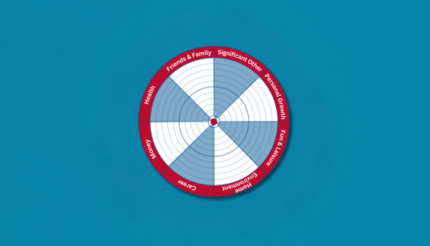Learn. Earn. Return. How to Build The Life You Want: The success of your business depends a great deal on your own personal development. To be the best at your job, you yourself need to grow and develop, to build the person you want to become.
In the blog dedicated to the Ladder of Wealth, we looked at how people could grow and build their way towards entrepreneurship. Let’s recap!.. In a nutshell, the levels are as follows:
- In the first 10 years, you learn to survive. You learn how to talk, walk, and take care of yourself.
- During the next 10 years, you prepare to have a job. School doesn’t particularly teach you how to become a business owner but you learn and develop the skills you can go on to use in your working life.
- Between ages 20 and 30, you become good at mastering money and relationships. You have your first job, learn how to handle finances, and connect with people in different contexts.
- Between ages 30 and 40, it’s time for you to start making real money using the skills you’ve been developing.
- After 40, if you so wish, you should be able to master your ability to bring together people, ideas, and resources, and then look to build systems that bring a consistent return.
An easy way to express this progression is through the formula “Learn. Earn. Return.”
With this in mind, you must get yourself ready and be proactive about your life. Instead of simply accepting whatever happens to you, start planning your life to enable you to be the person you want to be, and do what you need to do to achieve what you want.
Decide What’s Important in Your Life
Before you can start planning the future, you must identify the areas in your life that really matter to you. This way, you will know where you must improve and develop the skills necessary to build success.
Identifying the areas where you want to focus is essential when planning. Based on these, you can then decide which roles you want to play in life, and set goals for each of them.
Here are some examples:
- Family
- Health
- Learning and personal development
- Philanthropy, charity, religion
- Business, job, career
- Finances
- Relationships
- Travelling
Brad Sugars, ActionCOACH founder and CEO, advises us to pick between 5 and 12 categories when starting to do this exercise. Too high a number will make it difficult to focus on all the things that matter. So, if you have more than 12 categories, try to regroup them to make it easier to plan your life.
As you identify the areas that matter most in your life, you should take a step back and see if anything is missing. Perhaps things you haven’t found time for up till now, but you would like to prioritise in the future. For example, if you’ve neglected building relationships, but you would like this to change, now is the right time to highlight it as an area of your life where you want to focus.
Identify The Roles You Play in Life
For each area you have identified, write down the roles that you play. For example, in your family, you may play the roles of son/daughter, sibling, parent, business owner, employer, scout leader, and so on. Think about this for a day, a week, or even a few weeks. Making this list takes time, as it could initially include as many as 200 different roles or more across all your categories.
In your business, you may be the public speaker, marketer, salesperson, and even trainer if you’re responsible for inducting new people. The more accurately you break down your life into the various roles you have to play, the easier it becomes to plan your future.
When you have multiple roles, it becomes clearer who you need to be to accomplish what you want in life. However, too many roles can become overwhelming. In this case, you may need to reduce the number of roles you have all at the same time.
How can you reduce the number of roles? While some roles are permanent (you can’t stop being a parent just because you are crazy busy), others don’t require attention on a daily basis. You don’t need to be the public speaker for your company every day. Just as you don’t have to be the perfect sibling and call your brothers and sisters daily. Stay realistic about how much you can do in one day, and plan accordingly.
You need to be consciously thinking about the roles you play, and what roles you want to play going forward. Keep in mind that, once a year, you should review this list. As you grow, the areas that matter to you may well change and, with them, your roles will evolve and adapt too.
Set Goals for Each Role
Here’s where it gets tougher. Each role needs at least one goal — and up to four or five. As you set goals, you can start to plan your life. Make a proactive decision about who you need to be and what you need to do in order to achieve what you want.
In the beginning, the role is just a name, so next you must expand it using “I am” statements. Create an “I am” statement for each role you have. For example, if you have three kids, you have three parent roles, and you need at least one “I am” statement for each of them.
It’s the same in business. Each client or collaborator has different needs, and you will have a different role when you connect with each of them. Some clients need a strong, demanding CEO; others want a supportive partner who can hold their hand during a crisis.
Be proactive and expand the role to define who you want to be in each life situation. Look at those “I am” statements and then begin adding goals – make certain they are dynamic and can take you to where you want to be. By adding goals to the statements, you can decide what you want to become and start planning a great life where you really can fit it all in and have it all.
What’s Next? (Your Plan for High Performance)
Here’s the 4-step formula to help you plan your life:
Idealise — Visualise — Verbalise — Materialise
- Idealise
Think about your dreams and what an ideal world looks like for you. Decide on the areas of your life that matter and get better at setting the right dreams for yourself.
- Visualise and Verbalise
Invest in yourself. Each morning and evening, take 10 or 20 minutes to visualise what you want to become and read aloud your “I am” statements. Print and laminate them – even put them in the shower if it helps! It doesn’t matter how you do it, but repeat this exercise every day for at least 90 days.
The more often you see your goals and repeat them, the easier it becomes for you to stick to your plan.
Learn visualisation. Do more than thinking about your new car; train your brain to see yourself entering the car or stepping inside the plane that takes you to your dream holiday. Professional golfer and 18-times major winner Jack Nicklaus visualised every single shot he made, including those he hit during practice sessions on the range. That’s the power of your brain!
- Materialise
Show up in your life. Train your head and heart to remember what’s important: your dreams, your “I am” statements, and seeing how they can become a reality.
Focus on the high-performance task of planning your life. If you want high performance, you must put in high performance, and you need the right training to achieve success.
Remember the formula Be x Do = Have. Decide what you want to have and then work backwards to identify the skills you must acquire that will result in you having what you want out of life.
If you would like to build the life you want, sign up for a free coaching session and we can talk about personal development and how it will contribute to building a successful business.





